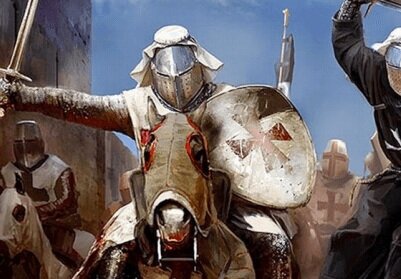This article is taken from the May 2019 Issue of the Fraternal Review titled, “Jacques DeMolay”.
In France as well as Jerusalem, Templars and Freemasons existed side by side and must have influenced each other’s esoteric knowledge. An examination of architecture when the Gothic style was adopted reveals that the first European churches built deliberately in the new Gothic style began to be constructed after Jerusalem’s conquest by the crusaders.
WHEN DID THIS TRANSFORMATION BEGIN?
With the Templars’ Grand Master being also the Freemasons’, the gradual progress from operational to speculative Masonry had already begun. The Cistercian monks, dealing with construction planning, had also been members of masons’ lodges — an example to the clerical or monastic type of mason. In Paris, where all other professions had their own lodges, the masons shared quarters with Templars, also showing the close relationship between the two organizations.
The Papal decree of 1312 that liquidated the Templars’ order also ended the Masons’ right of free passage. Fearing even worse reversals, French Masons fled to Germany where, from then on, Gothic architecture became suddenly dominant.
There, the Masons’ lodges that received Templars escaping from France experienced the same gradual transformation as the British ones had.
Over time, the Templars became the Freemasons. Therefore, their lodges and their new centers were built to resemble Solomon’s Temple, where the Templars had first originated.
TRANSFORMATIONAL EVIDENCE
The first handwritten Masonic document of 1390 is titled Regius. Evidently, from its verse style and the fact that it speaks of Lords and Ladies during lodge meetings, masonry had already become speculative. It is also interesting that masonry, as old as human history, had no recorded charter preceding the document. Architecture and construction require advanced know-how.
Understandably, those who enjoyed this expertise weren’t eager to put their knowledge on paper, where undesirables might obtain it. But another explanation for their having no written rules maybe that they existed within an order just as secretive as they were.
The Masons survived with their secrets, safe within this order until the Templars were annihilated and abolished by the Inquisition. Then some of their secrets began to emerge. The Templars’ rules were also the Masons’ rules.
[Harun Yahya, The Knights Templars. (Norwich, UK; Millad Book Center, 2003), 84.]
